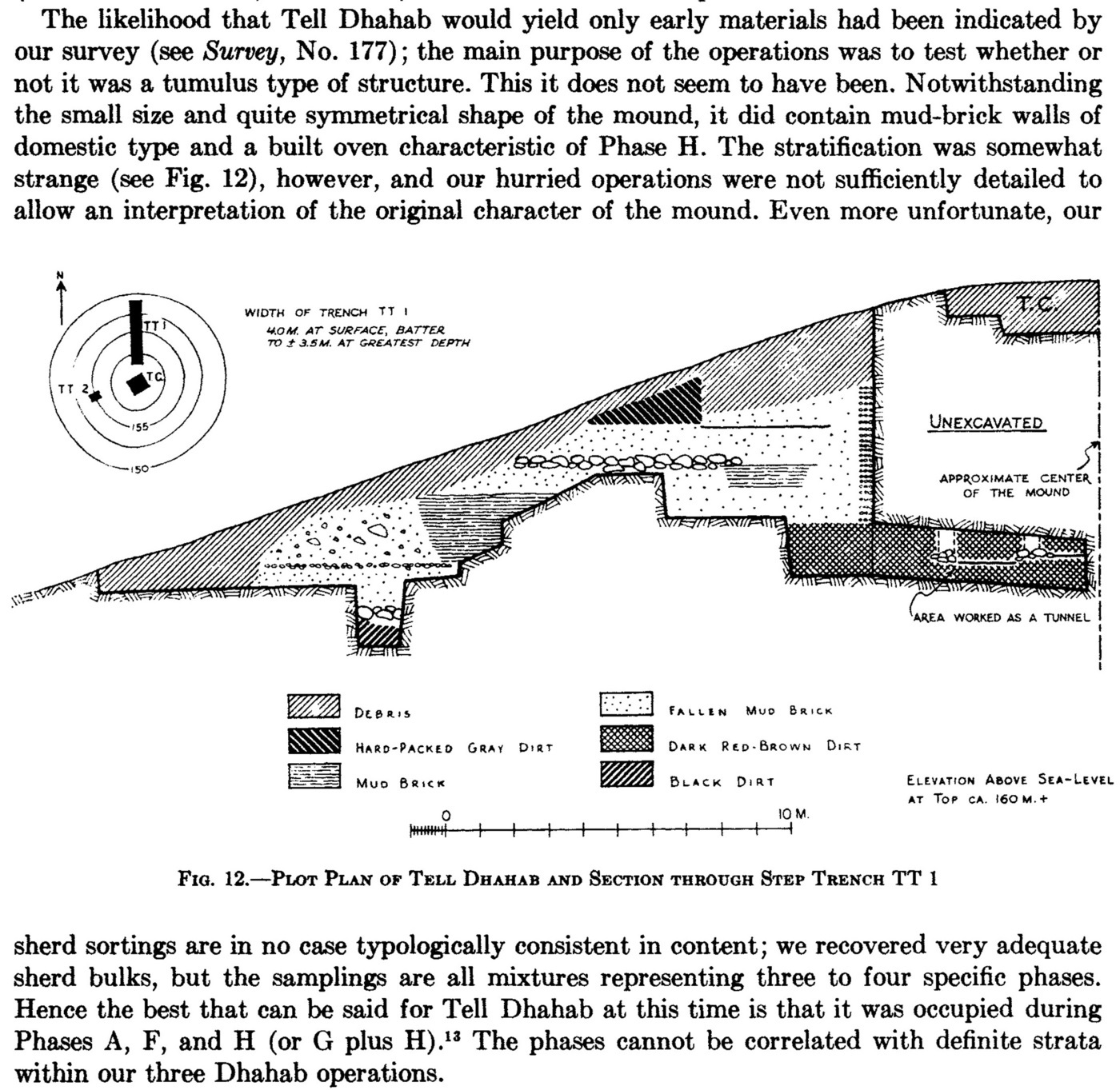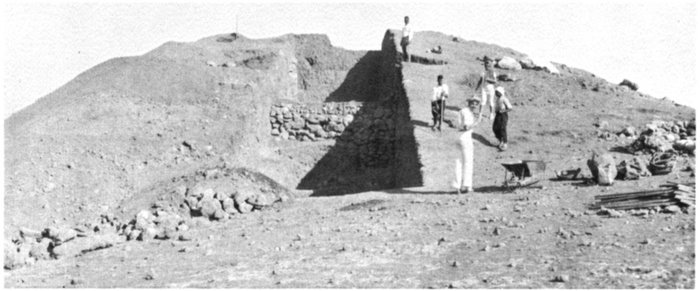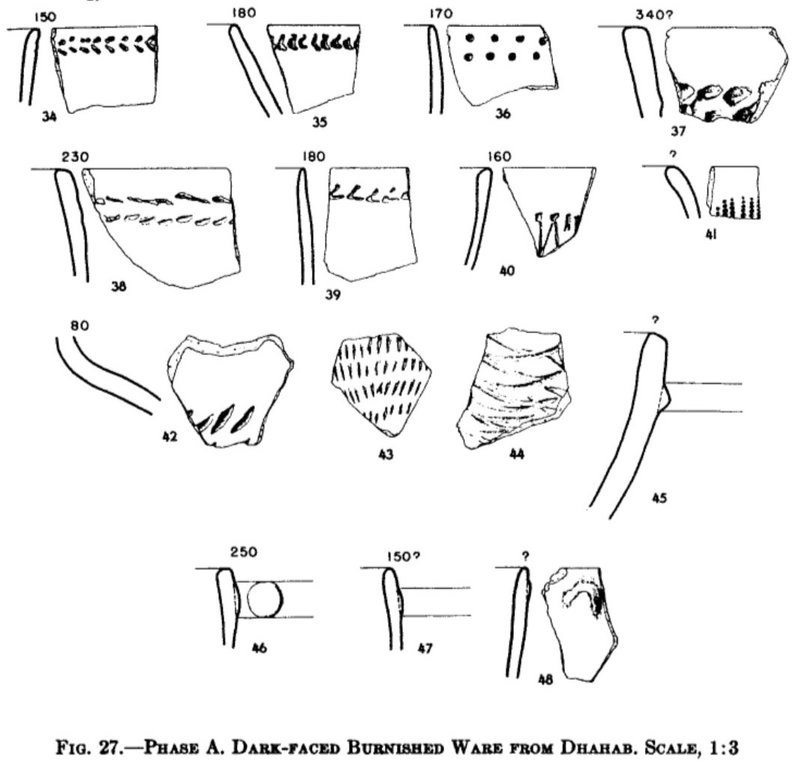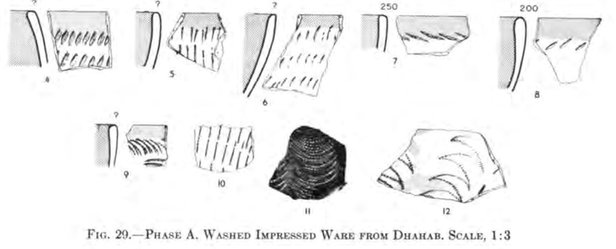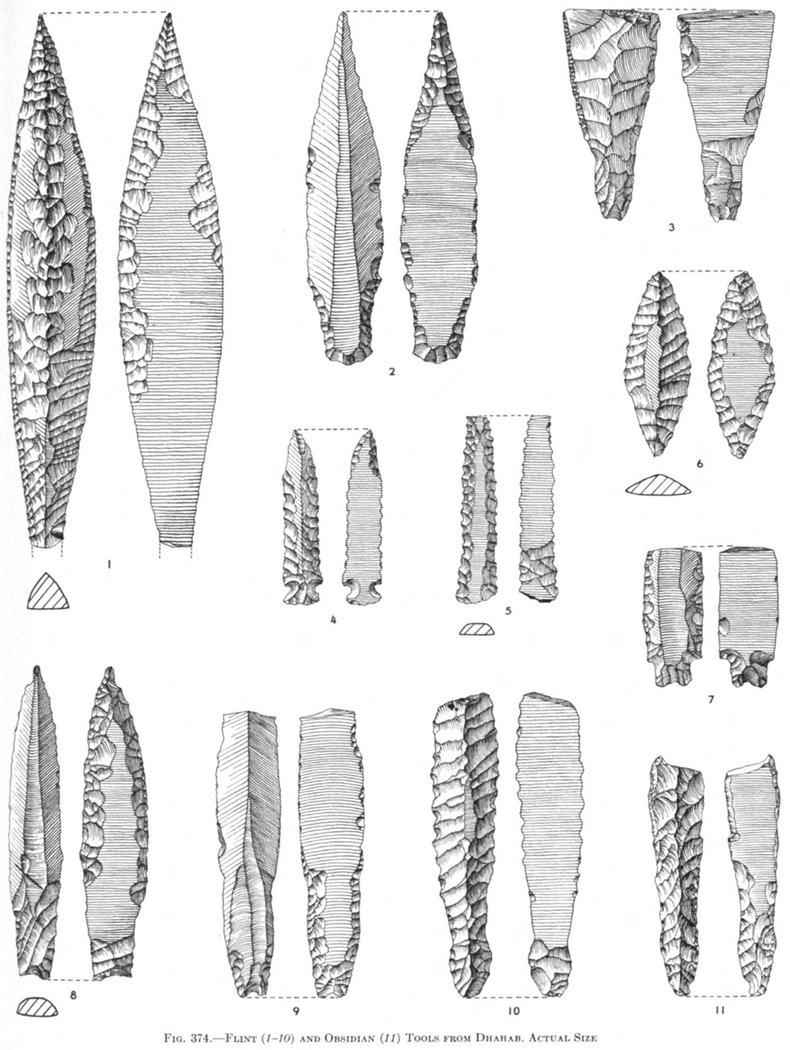|
Other Archaeological Sites / The Neolithic of the Levant (500 Page Book Online) Tell Dhahab in the Amuq Valley Region of Ancient Syria (Modern Turkey)
Tell (Arabic: mound) Dhahab was probably a small village which was probably associated in ancient times with nearby Tell Judaihdah. The mound measures 60 metres in diameter and 10 metres high and is located 200 metres to the west of the pond at the base of Tell Judaidah. Much of our information about the sequence of Neolithic occupation of the Amuq Plain comes from the excavations of the Oriental Institute of Chicago University at these 2 sites (1).
(2) Excavations in the Plain of Antioch Volume I: The Earlier Assemblages Phases A-J With interest in the "Syro-Hittite" period paramount, operations of really adequate size for the full exploration of prehistoric horizons were not made. Actually, we did have interest in the prehistoric ranges, but removal of tons of strata of later horizons on the great mounds so that the prehistoric depths might be reached in adequate areas was not economically practicable. Unfortunately excavations on low mounds known by means of the survey to have been abandoned after prehistoric times were not attempted until the last weeks of the final season. Operations on Tell Dhahab and Tell Kurdu were made at this late date but lack of time and staff and an unsettled political situation restricted the size and detailed control which these operations really demanded (Page 1). Survey Number 177: 36°15'55" N, 36°34'55" E; elevation of plain at base circa 152 metres; greatest elevation circa 162 metres; diameter (mound is approximately circular) circa 60 metres; circa 200 metres west of pond at base of Tell al-Judaidah; circa 1.5 km east of Rihaniyyah ... The Tell Dhahab operations were done in "collaboration" with certain amateurs under circumstances which attended the troubled political conditions in the summer of 1938.
The Dhahab material can only be classified typologically. Material assessed typologically as being from the Neolitihic (circa 7000 BC) or Amuq Phase A came from all three operations on Dhahab, where areas totaling some 130 square metres were exposed to various depths. The yields were always inconsistent and the stratigraphy was incomprehensible during the short duration of our operations (Page 46).
Because of the completely inconsistent character of the sherd sortings from Dhahab, it is impossible to assign any of the architectural features of the TT 1 exposure to Phase A. Phase A is defined almost entirely on the basis of ceramic evidence. It includes those floors whose ceramic content was limited to Coarse Simple Ware, Dark-faced Burnished Ware and Washed Impressed Ware. Such a condition was exposed only at the base of the JK 3 cut on Judaidah.
Figure 27 shows a selection of Dark-faced Burnished Ware sherds from Dhahab which may be assessed on typological grounds as of Phase A (6). The gross examination of the clay showed no significant difference from the Judaidah sampling, save possibly a slightly higher proportion of completely oxidized specimens. (6) See Page 15 on the relative unreliability of operations at Dhahab. Our reason for attributing these Dhahab sherds and those of the Washed Impressed Ware to Phase A depends on the fact that in a relatively large sorting (over 350 sherds) none of the more characteristic Phase B criteria appeared. In fact, the site seems not to have been occupied between Phases A and F in so far as the sherd sortings indicate.
FLINT AND OBSIDIAN ARTIFACTS FROM DHAHAB The artifacts of this large group are instructive despite their unfortunately mixed contexts (see Page 15). The greater share can be placed typologically in the Phases A-B flint industry. Most of the remainder fall typologically within the general range of Phases F-H, for which sickle blades and blade sections made from Cananean blades are the main criteria of the flint industry. As in the case of the pottery, flints characterizing Phases C-E are entirely absent from Dhahab. Since most of the Dhahab material is duplicated by well stratified finds, only a few examples are illustrated and described, mainly projectile points with new features.
(1) Tell Dhahab: The Amuq Survey and Related Projects at © 2018 The Oriental Institute of The University of Chicago
(2) Excavations in the Plain of Antioch Volume I: The Earlier Assemblages Phases A-J
|

